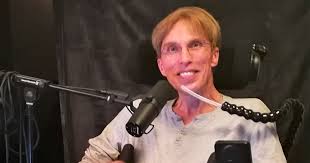
Breaking News
 How To Become Competent, Confident, and Dangerous, with guest Doug Casey
How To Become Competent, Confident, and Dangerous, with guest Doug Casey
 My Hot Take On Bill Gates' Climate Change Essay | Alex Epstein #457 | The Way I Heard It
My Hot Take On Bill Gates' Climate Change Essay | Alex Epstein #457 | The Way I Heard It
 Discussion on Covid Vaccination Should Be Non-Controversial
Discussion on Covid Vaccination Should Be Non-Controversial
Top Tech News
 HUGE 32kWh LiFePO4 DIY Battery w/ 628Ah Cells! 90 Minute Build
HUGE 32kWh LiFePO4 DIY Battery w/ 628Ah Cells! 90 Minute Build
 What Has Bitcoin Become 17 Years After Satoshi Nakamoto Published The Whitepaper?
What Has Bitcoin Become 17 Years After Satoshi Nakamoto Published The Whitepaper?
 Japan just injected artificial blood into a human. No blood type needed. No refrigeration.
Japan just injected artificial blood into a human. No blood type needed. No refrigeration.
 The 6 Best LLM Tools To Run Models Locally
The 6 Best LLM Tools To Run Models Locally
 Testing My First Sodium-Ion Solar Battery
Testing My First Sodium-Ion Solar Battery
 A man once paralyzed from the waist down now stands on his own, not with machines or wires,...
A man once paralyzed from the waist down now stands on his own, not with machines or wires,...
 Review: Thumb-sized thermal camera turns your phone into a smart tool
Review: Thumb-sized thermal camera turns your phone into a smart tool
 Army To Bring Nuclear Microreactors To Its Bases By 2028
Army To Bring Nuclear Microreactors To Its Bases By 2028
 Nissan Says It's On Track For Solid-State Batteries That Double EV Range By 2028
Nissan Says It's On Track For Solid-State Batteries That Double EV Range By 2028
'I'm not dying, I'm transforming': Doctor diagnosed with terminal motor neurone dise

A scientist who is dying from a muscle wasting disease is taking drastic steps in his bid to become the world's first true cyborg.
Dr Peter Scott-Morgan, 61, from Torquay, Devon, was diagnosed with motor neurone disease two years ago and told it would only take until this year to kill him.
But instead of accepting his fate he decided to challenge what it meant to be human and now hopes to create Peter 2.0.
He is gradually replacing his bodily functions with machinery – an electric wheelchair now enables to him to be upright, sitting or laid down; he has banked his voice on a computer and had his voicebox removed; and is fed through a tube and has a catheter and colostomy bag attached so he doesn't eat or excrete.
The most recent phase of Dr Scott-Morgan's transformation has been to make a computer avatar of his face.
The avatar – a computer rendering of his face – is designed to be controlled with artificial intelligence and look like him before he became ill.
He has also rigged up various machines so he can control them with the movement of his eyes, among them a hoist and a motorised bed.

 Dark Tidings
Dark Tidings Carbon based computers that run on iron
Carbon based computers that run on iron

